What is it alopecia mucinous?
Alopecia mucinosa, also known as follicular mucinosisdescribes the appearance of mucin around hair follicles as seen under the microscope. It is characterized by patches of bald skin in which the hair follicles are prominent.
Mucins are seen as a clear or whitish viscous substance composed mainly of hyaluronic acid, a normal component of soil substance surrounding collagen at dermis. Various other forms of mucinosis are described and classified.
- A primary and acute disorder that occurs in children and adolescents (Pinkus type).
- A primary and chronic disorder that occurs in people over 40 years.
- A secondary disorder associated with benign or evil one Skin illness.
- Urticaria-like follicular mucinosis (rare).
Alopecia mucinous

Alopecia mucinous
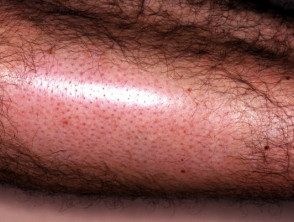
Alopecia mucinous
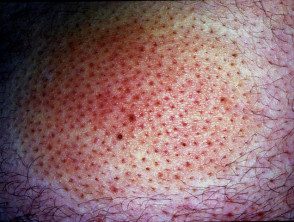
Alopecia mucinous
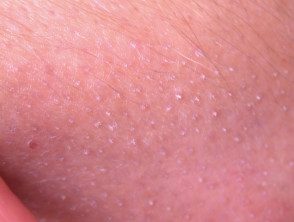
Alopecia mucinous
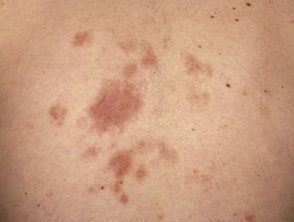
Alopecia mucinous
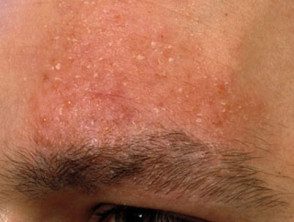
Alopecia mucinous
What causes mucinous alopecia?
The cause of mucinous alopecia is unknown, but it may have something to do with circulating immune complexes and cellular immunity. What is known is that mucinous material is deposited and accumulates in the hair follicles and sebaceous glands to create a inflammatory condition that subsequently breaks down the ability of the affected follicles to produce hair.
What are the clinical characteristics?
Mucinous alopecia most often affects the face, neck, and scalp, but any part of the body can be affected.
- It is presented as grouped follicular papules inside red, dry patches or plates.
- The patches or plates are usually 2 to 5 cm in diameter, but can be larger.
- One or more injuries may be present from the start or a single one injury You can develop multiple injuries in a few weeks or months.
- Hair loss does not leave scars and is potentially reversible in the early stages, but in more advanced diseases the hair follicles are destroyed, causing scarring alopecia.
Primary and acute mucinous alopecia
- It affects people <40 años.
- Usually only one or a few injuries arise.
- They are often found on the head, neck, and upper arm.
- Most resolve spontaneously in 2 months to 2 years.
Primary and chronic mucinous alopecia
- It affects people> 40 years.
- Extended and often numerous injuries can persist or recur indefinitely.
- It presents as flat or raised patches that can rarely be ulcerated.
- Permanently bald patches are studded with horn plugs.
- Sometimes the mucin can be removed from the affected follicles.
Urticaria-like follicular mucinosis
- It presents as small itchy bumps (papules) or raised areas (plaques).
- These are mainly found on the head and neck.
Mucinous secondary alopecia
- It affects people> 40 years.
- Degeneration of the follicular mucosa can arise in inflammatory skin diseases such as lupus erythematosus and lichen simplex.
- It can also arise in malignant diseases like cutaneous T cell lymphoma (the most common association, affecting 10-30% in cases of alopecia mucinosa), Kaposi sarcoma and Hodgkin lymphoma (especially in children).
- Typical skin characteristics of the underlying disease may also be present.
- A skin biopsy They need to be distinguished from primary mucinous alopecia.
How is mucinous alopecia diagnosed?
Mucinous alopecia is diagnosed by its clinical appearance and is supported by histopathological biopsy findings:
- Mucin accumulation in the pilosebaceous follicle and sebaceous glands
- Keratinous waste within a cystic cavity
- Inflammation
- Degeneration of follicular structures.
Histological The characteristics of the underlying disease are present in secondary mucinous alopecia.
Which is the differential diagnosis mucinous alopecia?
Secondary causes of mucinous alopecia, such as mycosis fungoides, may go undiagnosed for some years, requiring careful follow-up and biopsy. Other conditions that may need to be considered in the differential diagnosis include:
-
Alopecia areata, which causes non-scarring located bald patches
- Seborrheic dermatitis, psoriasis and ringworm of the head, which can cause scaly plaques and hair loss
- Discoid lupus erythematosus and lichen planopilaris, which can cause localized areas of climbing and scarring alopecia.
What is the treatment for mucinous alopecia?
There is no proven effective treatment for mucinous alopecia. Usually, acute and primary mucinous alopecia that occurs in children resolves spontaneously. Because there is a small chance of spontaneous resolution for other forms of the disease, the effect of treatment can be difficult to assess. Some treatments that have been tried with limited success include:
- Currentintralesional and systemic corticosteroids
- Oral antibiotics like minocycline
- Dapsone
- Indomethacin
- Interferons
- Topical and systemic photochemotherapy (PUVA)
- Topical Nitrogen Mustard
- Radiation therapy
- UVA1 phototherapy
- Topical bexarotene 1% gel.
Secondary mucinous alopecia should be treated appropriately for the underlying skin disease, particularly if it is cutaneous T-cell lymphoma.

